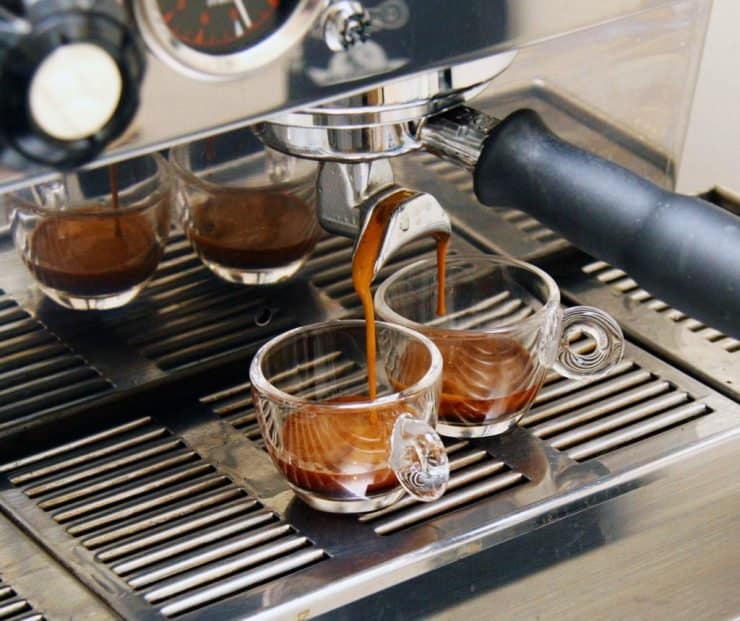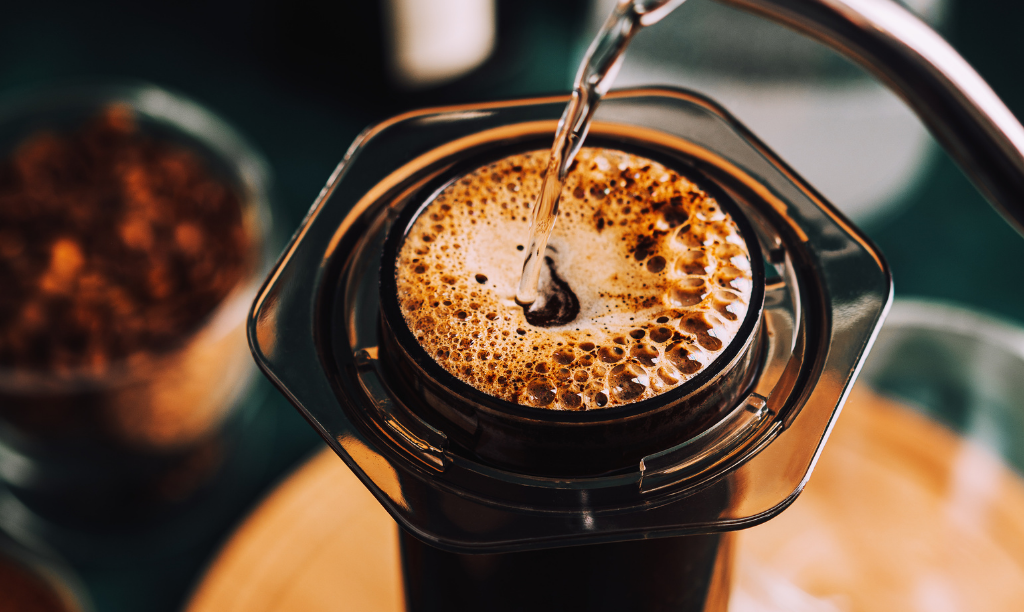A Comprehensive Guide to Various Coffee Brewing Methods You Need To Attempt
A Comprehensive Guide to Various Coffee Brewing Methods You Need To Attempt
Blog Article
The Scientific Research Behind Coffee Brewing: Exactly How Temperature Level and Time Affect Your Drink
Recognizing the scientific research behind coffee brewing reveals that temperature level and time are not simple variables however essential components that determine the beverage's flavor account and general top quality. The optimum brewing temperature level commonly falls between 195 ° F and 205 ° F, while the period of extraction differs considerably across different approaches. This interplay of variables can cause a mug that is either unsatisfactory or fascinating. As we explore the nuances of these components, the inquiry emerges: just how can one efficiently equilibrium temperature level and time to achieve that ideal brew?
The Chemistry of Coffee Extraction
The chemistry of coffee extraction looks into the detailed processes that transform raw coffee beans into the fragrant drink taken pleasure in worldwide. This transformation largely entails the solubility of numerous compounds present in the beans, which are influenced by elements such as work size, water quality, and the developing method utilized.
Throughout the brewing procedure, hot water acts as a solvent, removing soluble substances, including high levels of caffeine, acids, lipids, and sugars, from the coffee grounds. Each substance adds to the taste profile, scent, and body of the final drink. Acids are liable for intense and zesty notes, while oils add to an abundant mouthfeel.
The first stages of developing essence acids and sugars, leading to a pleasant acidity, while extended removal can lead to anger due to over-extraction of unwanted substances. Understanding these chemical communications is essential for enhancing brewing techniques, as the equilibrium in between removal time and water temperature level can substantially affect the overall top quality of the coffee.
Suitable Brewing Temperatures
Discovering the appropriate brewing temperature is important for unlocking the complete possibility of coffee flavors and scents - coffee brewing methods. Research study shows that the optimal array for developing coffee lies between 195 ° F to 205 ° F(90 ° C to 96 ° C) Within this range, the extraction process successfully dissolves the preferable soluble compounds in coffee beans, bring about a balanced and delicious cup
Developing at lower temperature levels, such as listed below 195 ° F(90 ° C ), may result in under-extraction, producing an acidic and weak brew with soft flavors. On the other hand, brewing at temperatures exceeding 205 ° F(96 ° C) can lead to over-extraction, creating a bitter and rough taste because of the too much dissolution of unfavorable compounds, such as tannins.
In addition, the ideal brewing temperature can differ depending upon the coffee bean type and roast degree. Lighter roasts often profit from somewhat higher temperatures to boost their complicated taste profiles, while darker roasts might be better suited to reduced temperatures to minimize resentment.
Ultimately, keeping accuracy in developing temperature levels is essential for achieving an unified balance of flavors, guaranteeing that every cup of coffee provides a gratifying sensory experience.
Impact of Brewing Time
Developing time plays a crucial role in determining the taste profile and total quality of coffee. The removal procedure, which affects the preference, fragrance, and body of the drink, is largely depending on how much time the coffee premises are in call with water. Much shorter developing times can lead to under-extraction, bring about a weak or sour flavor, as inadequate soluble substances are dissolved. Conversely, long term developing can go to website bring about over-extraction, where undesirable compounds are released, causing an astringent or bitter preference.
Ideal brewing time differs depending upon the approach utilized and the grind size of the coffee. As an example, a French press commonly calls for regarding four mins, while coffee removal is usually finished within 25 to 30 seconds. It is crucial to adjust brewing time in conjunction with various other variables, such as water temperature level and coffee-to-water proportion, to achieve the preferred flavor account.
Understanding the impact of developing time enables coffee fanatics to fine-tune their brewing strategies, eventually boosting the sensory experience of their mug (coffee brewing methods). With cautious focus to this variable, one can unlock the full possibility of the coffee, exposing its one-of-a-kind qualities and subtleties
Brewing Techniques and Their Results

For circumstances, approaches like French press and cool brew permit for a longer steeping time, leading to a fuller body and durable flavor as a result of increased extraction of oils and soluble solids. Conversely, espresso brewing utilizes high pressure and a much shorter removal time, creating a focused shot that stresses intense flavors and an abundant crema.
Pour-over techniques, such as Chemex or V60, use an even more regulated removal process, enabling the maker to manipulate circulation rate and water distribution, which can enhance illumination and clarity. Percolation approaches cycle water with the coffee premises numerous times, leading to a stronger, usually bitter Learn More Here flavor.
Finally, the usage of paper filters versus metal filters can likewise affect the final taste; paper filters typically produce a cleaner mug by capturing oils and fine bits, while metal filters allow even more oils to travel through, adding to a fuller mouthfeel - coffee brewing methods. Recognizing these nuances can boost the coffee experience substantially
Tips for Perfecting Your Mixture
A well-executed mixture can change even the easiest coffee right into an exceptional experience. Grind the beans simply prior to making to make the most of freshness, ensuring the work dimension matches your brewing technique-- coarser for French press and finer for espresso.
Water high quality plays an important duty; usage filtered water without contaminations. The perfect brewing temperature level ranges between 195 ° F and 205 ° F(90 ° C to 96 ° C ) Too warm can scorch the coffee, while as well amazing may under-extract tastes.
Timing is just as important. For immersion techniques, soaking for three to five mins is optimum, whereas drip approaches typically take around 5 minutes. Experiment with mixture times to discover your favored toughness.

Final Thought
In recap, the intricate connection between temperature level and time is paramount in the coffee developing procedure. Understanding these clinical concepts empowers individuals to refine their developing methods, eventually leading to a much more Your Domain Name satisfying and well balanced coffee experience.
Comprehending the science behind coffee developing exposes that temperature level and time are not simple variables however crucial elements that dictate the drink's flavor profile and overall top quality. Understanding these chemical interactions is important for maximizing developing techniques, as the equilibrium between removal time and water temperature level can significantly affect the total top quality of the coffee.Brewing time plays a crucial function in identifying the flavor profile and general top quality of coffee. By concentrating on these components-- bean top quality, grind dimension, water temperature, steeping time, and proportion-- you can raise your coffee developing procedure, resulting in a consistently premium cup.
In recap, the elaborate relationship in between temperature level and time is paramount in the coffee developing process.
Report this page